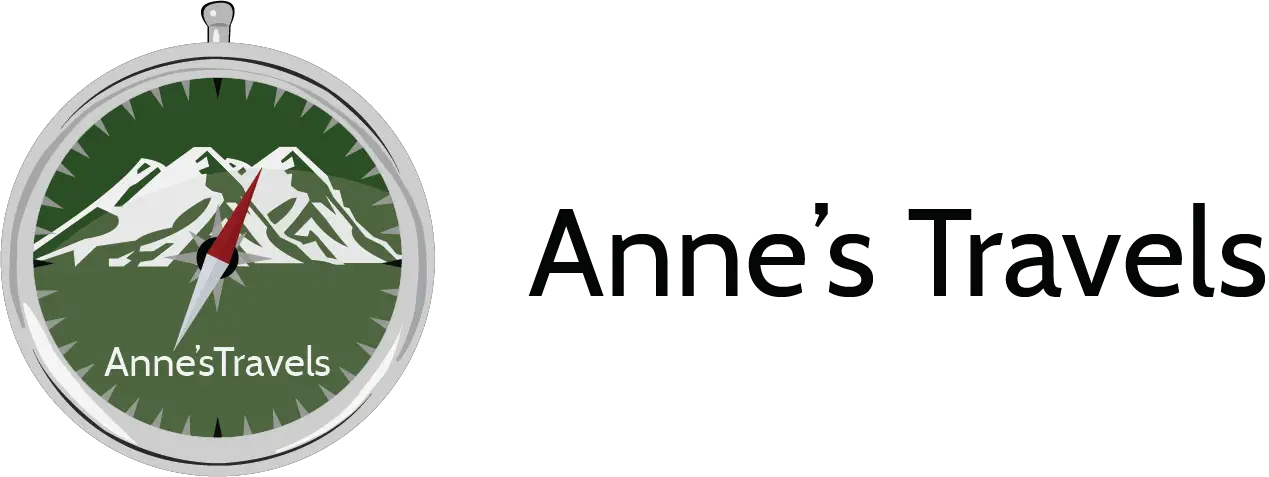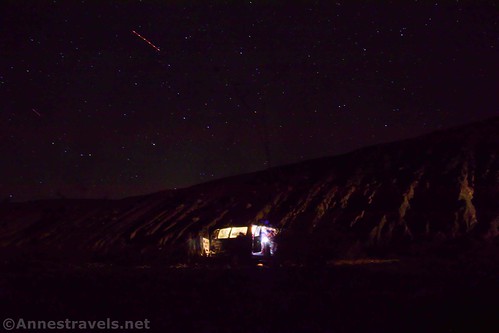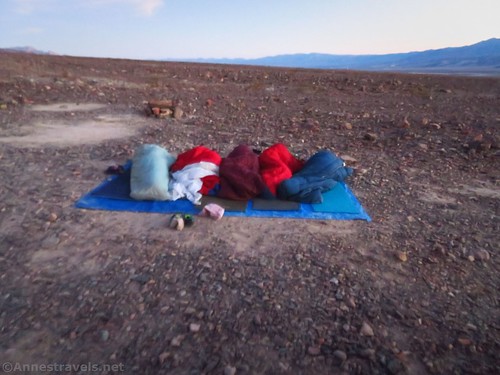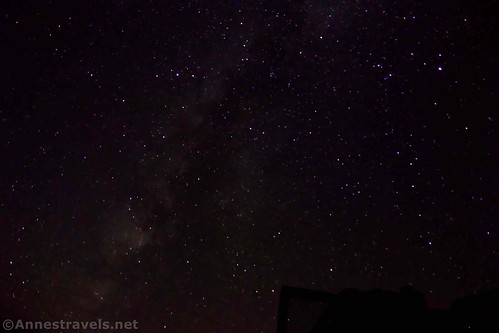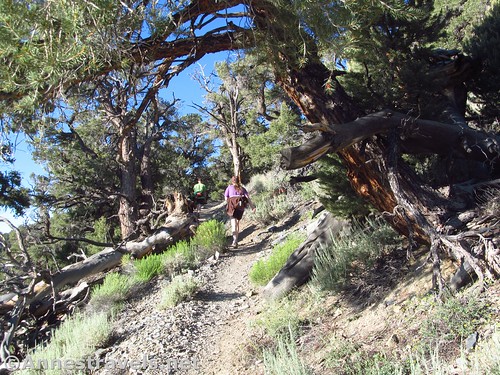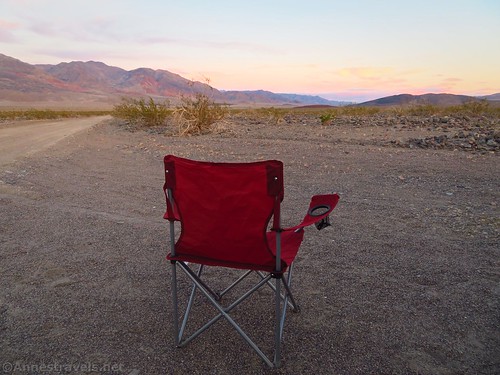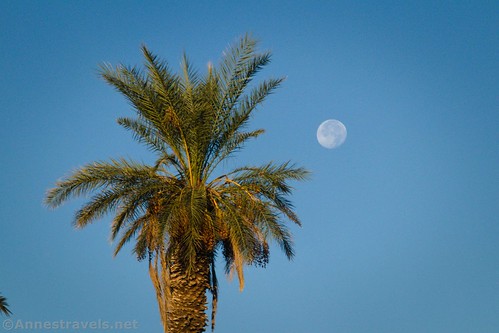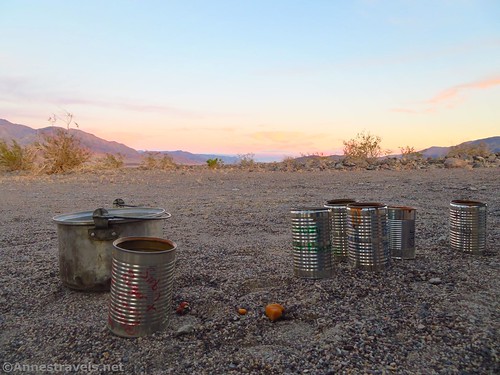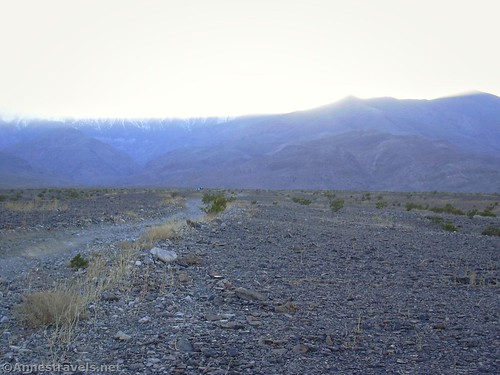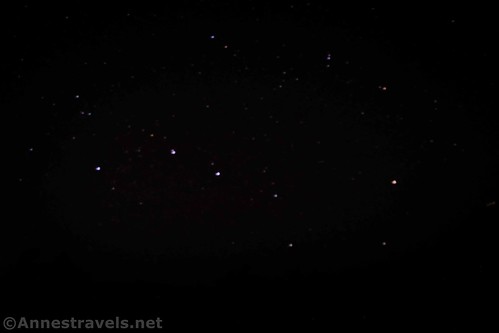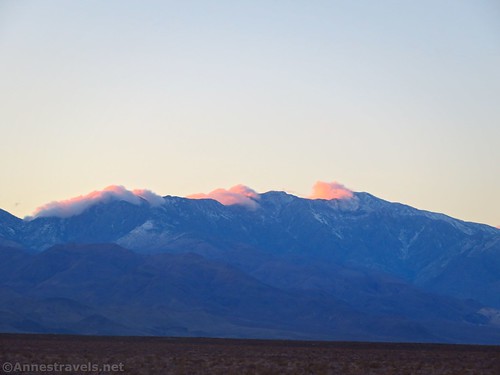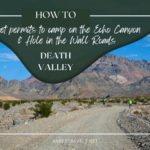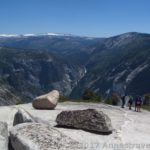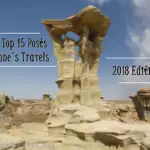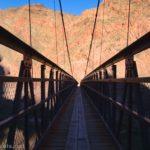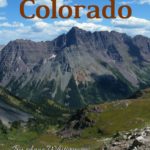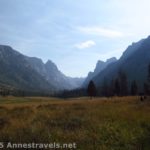
There isn’t half enough camping in Death Valley National Park for all of the visitors. That’s frequent in the national parks. But unlike most national parks, which seem to just throw up their hands and say, “figure it out for yourself somewhere else,” Death Valley allows dispersed camping on some of the dirt roads in the park. Some are only accessible by 4×4, but others should be fine for low-clearance vehicles. On top of this, there are also a few free campgrounds, so unless Death Valley is crazy crowded, you should be able to find a free campsite to spend the night!
In This Post
Tips & Tricks for Dispersed Camping
I found out about dispersed camping in the park on my first visit to Death Valley. We cheerfully spread out our tent’s ground tarp on the ground, piled on sleeping bags, and fell asleep whispering to each other about how many shooting stars we’d seen (ah, the wonder of tweens on an adventure…) The plan backfired on us a little bit – we went to Yosemite next, and camping high in the mountains in May means you just might get frost or even snow on your sleeping bags! But in Death Valley, we woke up every morning dry and rested and ready for the next day’s adventure.
Dispersed Camping Rules
There are a few rules that you’ll need to follow while dispersed camping:
- You may only camp where it’s permitted. Along dirt roads, that means the road must not be day-use only (for example, the Titus Canyon Road) and you must be at least 1 mile from a paved road or a “day-use only” dirt road (such as at least a mile up the Trail Canyon Road from the day-use only West Side Road).
- As of early 2024, four roads and one trail/route require permits: Echo Canyon Road, Hole in the Wall Road, Cottonwood Canyon Road, Marble Canyon Road, and the Cottonwood Canyon/Marble Canyon Backpacking Loop (in late 2023, Greenwater Valley Road was added to the permit-required list). $10 permits can be reserved on Reservation.gov for these roads/trail (read more about obtaining a permit here). (The backpacking permit can also be issued in person or at the self-serve kiosk at the Stovepipe Ranger Station or in advance online. It costs $6/permit + $4/person.)
- No driving off-road – you must stay in previously disturbed sites and park as closely as possible/reasonable to the dirt road. Per my experience, it’s not too hard to figure out where people have camped before.
- No campfires. If you want a campfire, you’ll have to stay in a campground. Gas stoves (such as camp stoves) are permitted.
- No more than 4 vehicles and/or 12 people per site. Campground sites are limited to 2 vehicles and 8 people.
- You may camp in Death Valley for no more than 30 days per calendar year. However, you can only camp in a given area for 7 days before moving on.
- For more information on rules & regs, visit https://www.nps.gov/deva/planyourvisit/backcamp.htm. I highly recommend the backcountry map that is linked to on that page – it is super helpful in telling you where it’s ok to camp. You can pick up a physical copy of the backcountry map at the visitor center.
Free Campgrounds in Death Valley
Emigrant Campground – Located west of Stovepipe Springs. Tents Only. It’s just a gravel parking area with picnic tables, fire rings, a primitive restroom, and spots where you can set up tents. That said, it’s very accessible to vehicles of all kinds.
Wildrose Campground – Located partway up the Emigrant Canyon Road (en route to the Charcoal Kilns). 25ft. length limit. A bit more rustic than Emigrant Campground (and nicer, per me), the campground has water, fire rings, picnic tables, and a primitive restroom. It tends to be cooler due to its elevation in the Panamint Mountains. When we stayed there, one of my young group members met a rattlesnake. It rattled and he ran, so everyone was happy. The road to the campground is dirt but should be accessible to low-clearance vehicles.
Thorndike Campground – Located near the end of the Emigrant Canyon Road (beyond the Charcoal Kilns). 25ft. length restriction; closed in the winter. 4×4 is recommended to get to the campground, though I’ve never had any trouble in my 2WD, high clearance vans.
Mahogany Flat – Located at the end of the Emigrant Canyon Road (at the trailhead for Telescope Peak). 25ft. length limit; closed in the winter. 4×4 is recommended to get to the campground. I found that the first three sites were accessible to my van, and after that, I wouldn’t risk it. There are picnic tables, fire rings, and a primitive restroom. Sleeping under the canopy of trees on a tarp (it’s so hot in Death Valley in June, even in the mountains!), I was awakened by one of my group members freaking out about the chirping of a desert insect. She didn’t remember it in the morning, though the rest of us did!
Dry camps:
Eureka Dry Camp – Located in the remote northern section of Death Valley. The road in is usually high-clearance friendly though the road may be sandy near the camp. A few parking spaces and a primitive restroom are about all you can expect in the way of services.
Homestake Dry Camp – Located near the Racetrack. You’ll need high clearance and good tires at a minimum; 4×4 is recommended. A few parking spots are all that’s there, though there is usually a primitive restroom along the entrance road.
Other Campgrounds
There are also fee campgrounds in Furnace Creek, Stovepipe Wells, and south of Scotty’s Castle.
Dispersed Camping Roads in Death Valley
None of these roads have services. You’re on your own out here. Unless specified, you may be able to drive a low-clearance vehicle up the 2WD, High Clearance Roads at least to the first or second campsite.
2WD, High Clearance Roads
Echo Canyon – Located near Zabriskie Point east of Furnace Creek. High clearance is OK for the first 3 miles. Extreme 4×4 beyond. Lots of campsites and well-used by other visitors. As of early 2023, a free permit is required for camping along the road. Permits can be obtained at the Furnace Creek Visitor Center the day of camping. These sites are no longer free, but they can be reserved on Recreation.gov.
Hole in the Wall Road – Located near 20 Mule Team Scenic Drive east of Furnace Creek. High clearance OK for the first 4 miles to Hole in the Wall. Beyond this, the road has deep gravel that requires 4×4. Many campsites and well-used. The road becomes rougher the further you drive. As of early 2023, a free permit is required for camping along the road. Permits can be obtained at the Furnace Creek Visitor Center the day of camping. These sites are no longer free, but they can be reserved on Recreation.gov.
Chloride City Road – Located off of the Daylight Pass Road in the east portion of the park. High clearance for the first 2.2 miles to the Monarch Canyon Spur Road Junction. 4×4 required beyond due to technical obstacles. This was the roughest, narrowest road I camped on in 2020 (barely enough room for my van, let alone passing non-existent other vehicles). The road is cooler than Echo Canyon or Hole in the Wall due to the elevation high in the Funeral Mountains.
Lake Hill Road – Located in Panamint Valley in the western part of the park. High clearance for 5 miles before the road is washed out. This was my favorite road to sleep on in 2020 with many sites and fewer people. However, a kangaroo rat ate my sandals – which were sitting on the tarp beside me while I slept. Brazen little thing!!
Racetrack Road – except between Teakettle Junction and Homestake Dry Camp. I hear there isn’t much in the way of campsites. While 4×4 isn’t technically required, sharp rocks, loose gravel, and deep washboard require high clearance.
Hidden Valley-Hunter Mountain Road – Located near the Racetrack in the northern part of the park but accessible from CA-190. Hidden Valley section is high clearance; Hunter Mountain requires 4×4.
Saline Valley Road – Located in the far west and north section of the park. Mostly high-clearance. No camping near Warm Springs (a clothing-optional hot springs with its own campground).
Eureka Valley Roads (north and south) – Located in the far north of the park. It’s usually high-clearance accessible, though the sand near the Eureka Dunes may require 4×4. No camping near the dunes except in the Dry Camp.
Greenwater Valley Road – Located in the far east of Death Valley. Usually 2WD accessible though it has heavy washboard. Free permit is required to camp; ask the rangers at the Furnace Creek Visitor Center. These sites are no longer free, but they can be reserved on Recreation.gov. Per my understanding, the roads off of the Greenwater Valley Road still allow dispersed camping (assuming you can find a place to do it.)

Trail Canyon Road – Located off of the West Side Road. The first 4 miles are high-clearance accessible; 4×4 once the trail drops into the wash. The views from the sites on this road are outstanding.
Hanaupah Canyon Road – Located off of the West Side Road. The first 5 miles are accessible; 4×4 once the road drops into the wash. Great views are to be had from the sites along this road. The wind blew one of my group member’s shoes off of the roof of the van one night and an animal dragged it across the rough, volcanic-like landscape for about a quarter-mile. At least, that’s what we guess since we found it by some miracle about a quarter-mile from our campsite!
Johnson Canyon Road – Located off of the West Side Road. The first 6 miles should be OK for high clearance vehicles; once the road enters the canyon, the route is 4×4 only.
Warm Spring Canyon Road – Located off of the West Side Road. A high clearance vehicle should be able to do the first 10 miles to Warm Springs Camp. Beyond the camp, deep ruts, rocks, and steps require 4×4 and very technical driving.
Harry Wade Road – Located in the far south of the park. While it’s high clearance or better in the northern section, there are virtually no campsites until you’re south of the Owlshead Road. 4×4 is required if the Amargosa River is flowing.
Owlshead Road – Located in the extreme south of the park. High clearance is fine for the first 9 miles or so. The road is very remote. Do not hike south into the military area. Camping areas may be scarce due to the lack of popularity.
Saratoga Spring Road – Located in the extreme south of the park. High clearance unless the Amargosa River is flowing. No camping once you get near the mountains. The only reasonable campsite that I saw was right at the junction where the Saratoga Spring Road turns north while the main road goes straight. If you turn right on the Ibex Dunes Road, you can pull over in a wide spot to camp before reaching the sand.
4×4 Roads
Phinney Canyon Road – Located in the Nevada section of the park, it’s not very well-visited. 4×4 is required inside of the park.
Cottonwood Road – Located near Stovepipe Wells. The first 8 miles are high clearance only (no low clearance vehicles), but camping isn’t allowed until at least 8 miles up the road. 4×4 is required after the road drops into a gravelly wash. As of early 2023, a free permit is required for camping along the road. Permits can be obtained at the Furnace Creek Visitor Center the day of camping.
Lippincott Road – Very rough 4×4 road near the Racetrack.
Steel Pass Road – Rough 4×4 Road in the northern part of the park for experienced drivers only.
Pleasant Canyon Road – Accessible from outside of the park on the west side. 4×4 only due to washouts, boulders, etc. – expect technical driving required.
Ibex Spring Road – Many washouts and off-camber slopes make this road in the south part of Death Valley 4×4 only.
Tips & Tricks while Dispersed Camping in Death Valley
- Leave your shoes and anything else that you aren’t using inside your vehicle. We’ve nearly lost five shoes on two different occasions when animals took off with them while we were sleeping. That said, it was only two occasions of a few dozen nights, so it’s not like your campsite will be ravaged by rogue kangaroo rats on a regular basis.
- Take plenty of food, water, and gas with you. You don’t want to get stuck out here unprepared.
- You don’t have to use a tent. A cheap tarp on the ground (hopefully with a sleeping pad between your sleeping bag and the tarp – the ground is usually rocky) is fine.
- Stargazing is the best out here!
- Try to arrive before dark. Many of the sites are easier to see/use if you can see what you’re doing. That said, I’m totally guilty of pulling in on the Hole in the Wall Road at 1am one night when I had to drive in from Vegas (this was before the permit system was instituted).
- Don’t try anything you’re not comfortable doing. This includes driving roads and specific sites.
- Remember that road conditions change, especially if it rains. If it starts to rain, get off of the dirt road before you get trapped by mud, find yourself in a flash flood, etc.
- Ask at the visitor center for recommendations. Dispersed camping is no secret in Death Valley – the rangers will be happy to tell you your options and suggest roads based on your needs.
Have fun & camp safe!
This Week’s Featured Product!
There’s far more in this book than you knew you wanted to know about Death Valley National Park. It also includes hikes and trails in the area.
